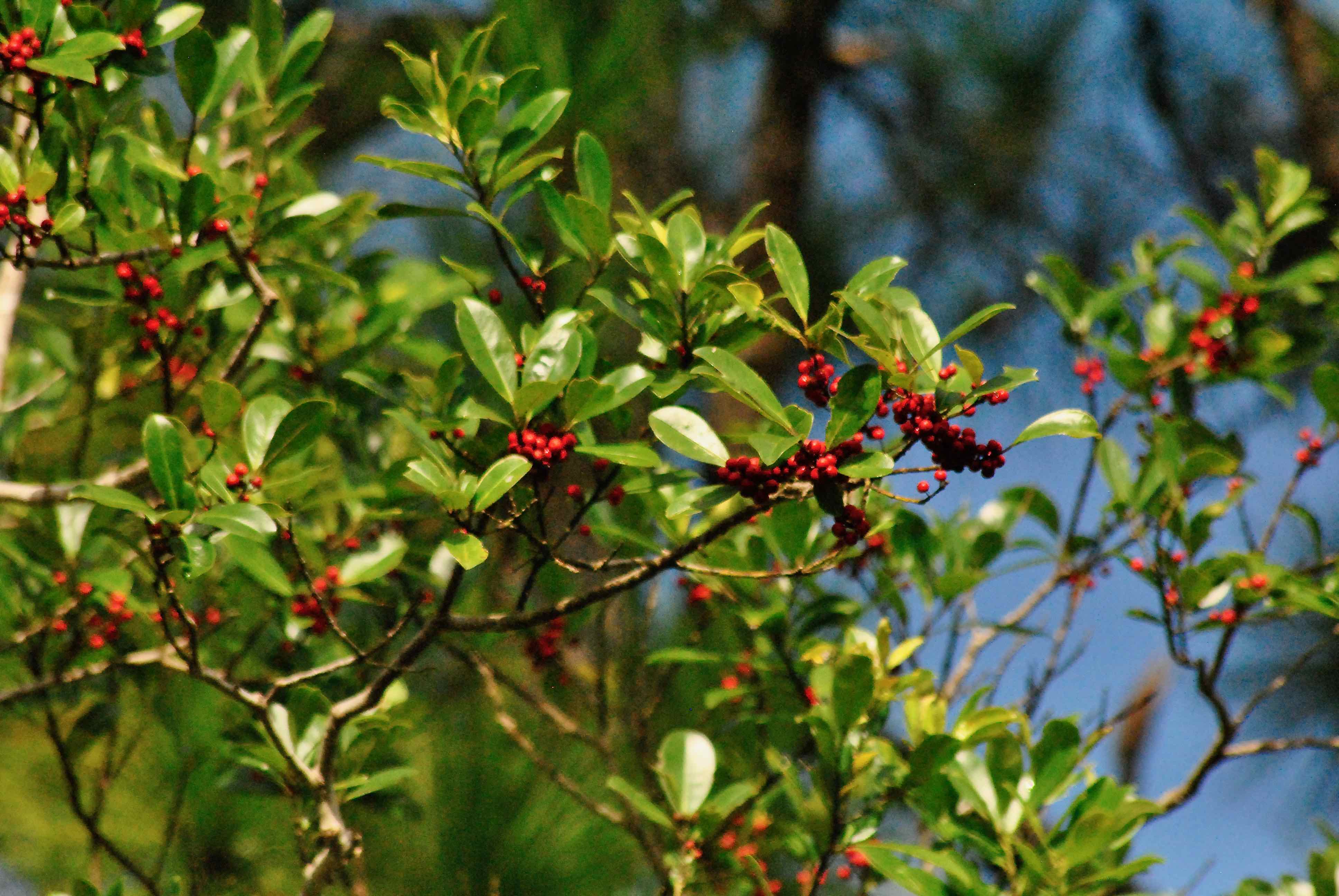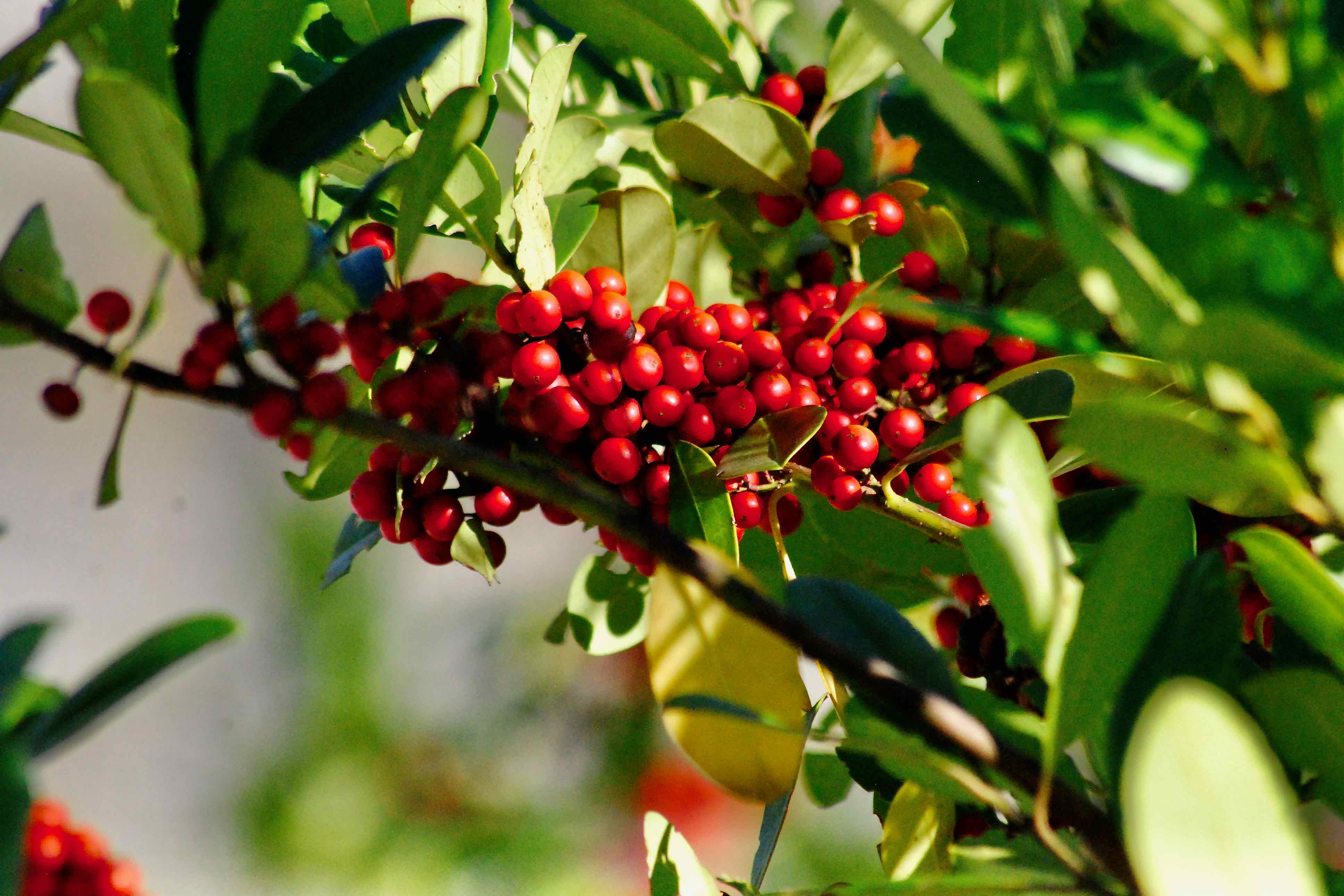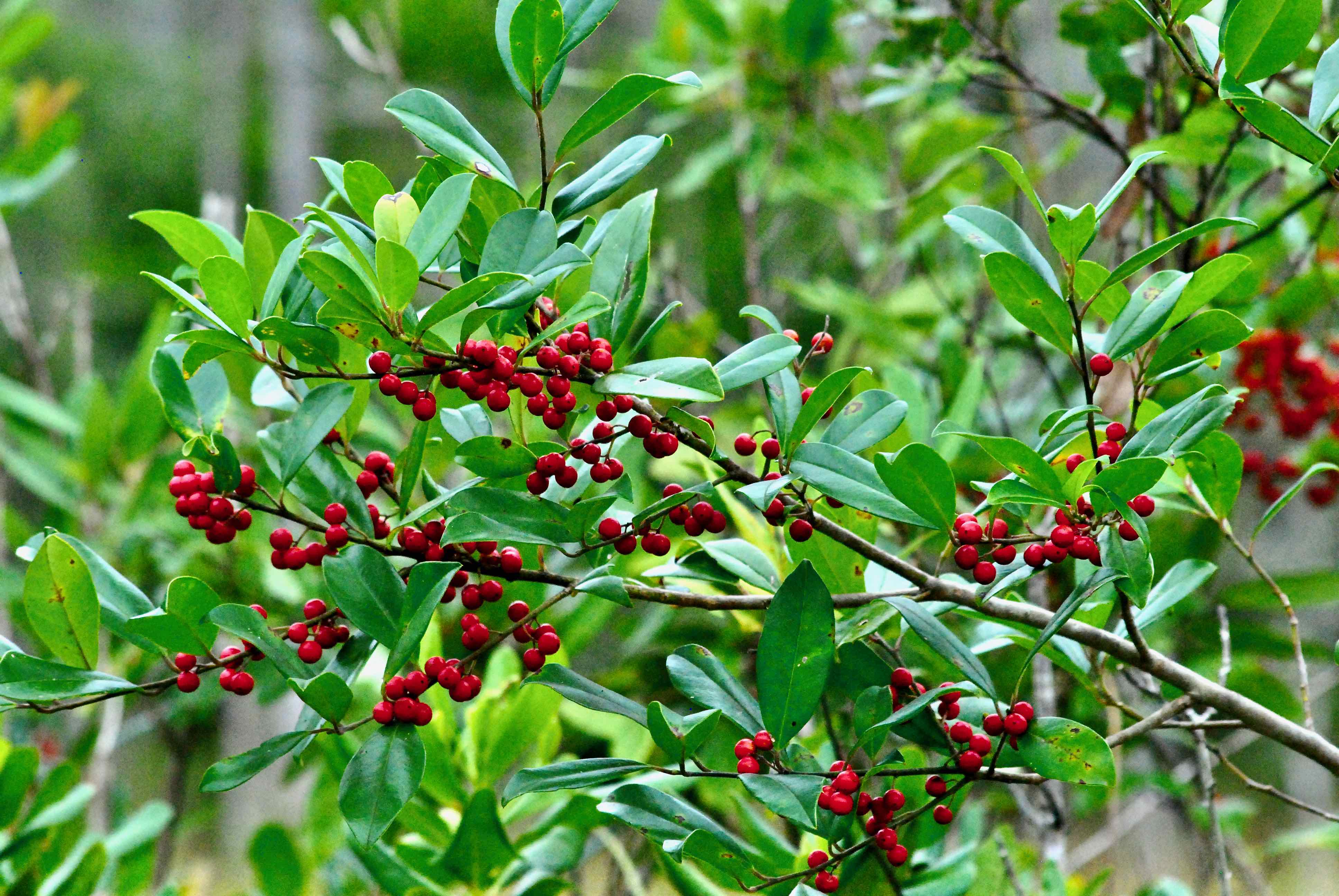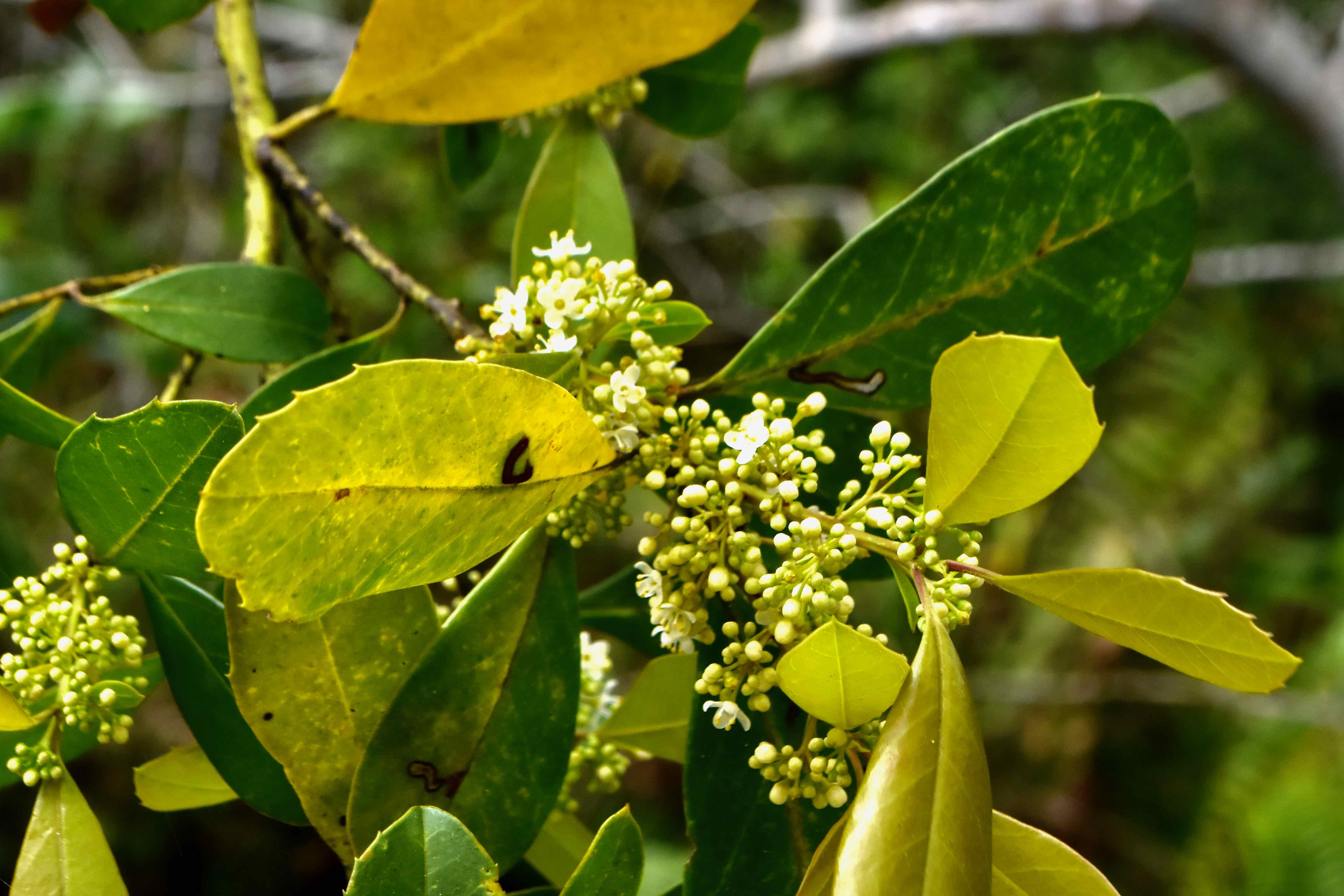
Dahoon holly, photographed at the Jones/Hungryland Wildlife and Environmental Area, Indiantown, Martin County, in September 2015.
Deck the halls with boughs of dahoon holly? Probably not. This isn't the classic holly we use to celebrate Christmas and the New Year. But it's close.
Dahoon holly, scientifically known as Ilex cassine, is a cousin to English holly, Ilex aquifolium, and American holly, Ilex opaca, the plants typically associated with the holidays. Dahoon has the bright, red berries that the classic hollies sport, but its leaves lack the sharply pointed teeth that are the hallmark of its cousins and part of holly's symbolic importance to Christmas.
Dahoon isn't left out of the holiday celebrations altogether. Its brilliant berries, which ripen in late summer and fall, persist on the tree through winter and are used as Christmas decorations. The boughs, however, probably should be left intact on the tree.
Dahoon holly is a Florida native that grows throughout most of the state, with the notable exception of the Keys. It's also native to the Atlantic and Gulf coastal plains from North Carolina to Texas. The Caribbean, including the Bahamas and Cuba, Mexico and Central America are part of dahoon's natural range.
It is a tree, usually of modest size growing to about about 10 to 30 feet tall but capable of doubling that under the right conditions. Its trunk often splits into multiple branches a short ways off the ground. Its bark is grayish-white and typically covered with lichens. It produces inconspicuous greenish white flowers year round, but mostly in the spring. Dahoon holly is diocious, meaning male and female flowers grow on separate plants. Both sexes need to be present in order to produce fruit, and nurseries often use cuttings rather than seeds to grow dahoon so that they know the sex of the plants.
Female dahoon hollies produce red and yellow berry-like fruit called drupes in late summer and fall. Some say they're toxic and some that say they are edible — if you can tolerate the bitter taste. Either way, probably best to avoid them. They're food for a host of birds and small mammals. Robins, in particular, feast on dahoon holly during their southward migration. The fruit will stay on the tree deep into winter. Deer will browse on young growth. The leaves are oblong, but can vary widely in shape even on the same tree. Most have smooth edges, what scientists call complete margins. But some also have a few small pointed teeth along the edge, a slight reminder of dahoon's relationship to traditional hollies.
Dahoon likes wet habitats, swamps and wet forests, with rich soil. It will grow in full sun or partial shade. It is a popular landscaping plant, used as an accent or specimen, as a screen, along highway median strips and in parking lots. It's also grown in pots, planters and even as bonsai. It resists most pests, requires little pruning, doesn't disturb pavement or foundations and isn't a litter problem because it holds its fruit so long. Hollies are commonly used to make teas, but dahoon not so much. The Cherokee used it to cause vomiting as part of a purification ceremony. It has a much more potent cousin, yapon holly, found north of Lake Okeechobee. The Seminoles used dahoon to make soap.
Florida does have several other native holly species, including the aforementioned American holly, but they are rare and considered either critically endangered or imperiled. Inkberry, also known as gallberry, is a member of the holly family, though it doesn't carry the name. It's quite common in South Florida.
Another common name: dahoon Christmas berry. It is a member of Aquifoliaceae, the holly family.
Click on photo for larger image
Links for Dahoon Holly



